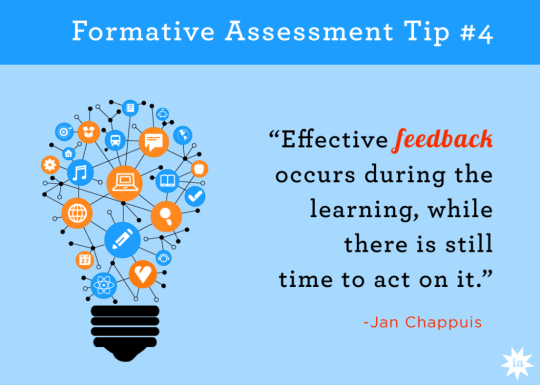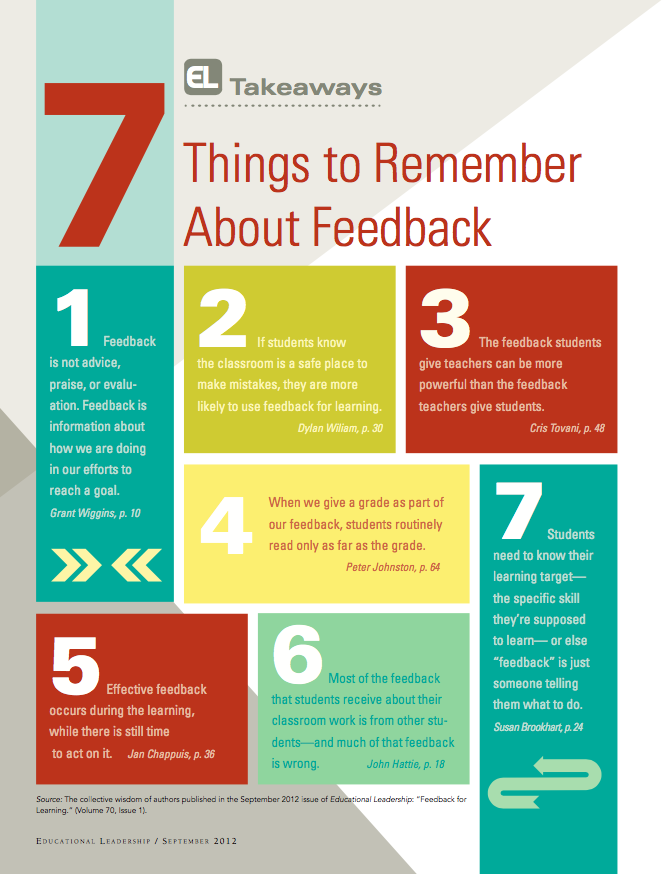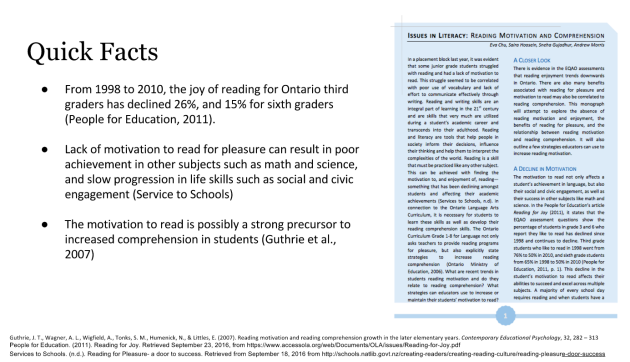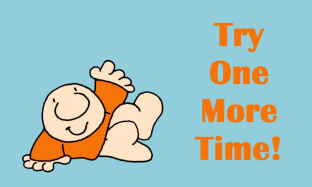An abundance of research and blog posts exist that point to the learning that happens when our students make mistakes. This week, I wanted to explore some ways to use this knowledge in the classroom/as a class. There are certain ways that educators can set the whole classroom environment to embrace mistakes, but going further I want to find ways that teachers can create math questions/scenarios that leave room for mistakes to promote learning.
MISTAKES IN THE MATH CLASSROOM
As I read about mistakes, I kept thinking, “OK great we need mistakes to happen, but I can’t force my students to get it wrong…so what do I do?”. I could not find many articles specifically on how to create openings for mistakes in the classroom. However, many of the ways we can do this, we already are familiar with. The following is a list of key ideas I compiled that I believe are essential to creating opportunities for mistakes in the math classroom (or all subjects!)
1. Encourage students to seek challenges
Carol Dweck – the pioneer of the growth-mindset – says, “I want challenges to become the new comfort zone” (PERTS, 2016). If we can encourage students to seek challenges, then the mindset of the educator and the student are aligned. As we discussed last week, there are many ways to encourage this growth mindset beginning with something as simple as praising based on ability (“You’re smart!”) but on effort (“You worked hard to achieve this”).
2. Make mistakes part of their work
This idea from Kelly O’Shea asks students to make an intentional mistake in their solution to a problem. They are able to choose a mistake that one of their group’s members made along the way to finding the solution, or create a mistake they feel other students might make. Unintentional mistakes are also welcome (as always!). Explicit mistake activities are a great way to get students to ask questions about mistakes rather than just pointing them out. This also asks students to reflect on the experience and review how struggle can be part of the learning process. My professor, Dr. Shelly Vohra, also highlighted an exit strategy that asks students to choose a favourite mistake they made during their math activity – a similar strategy to the one above.
3. Give work that encourages mistakes
This video highlights work with younger learners, but is very applicable for all ages. Let’s look at steps we can take to give work to encourage mistakes appropriately…
- Find your student’s Zone of Proximal Development (ZPD). Vygotsky, in this paper, says that the ZPD is the difference between what the learner can do with help and what the learner can do without help. Instruction and questions should be catered to the ZPD so that our students can struggle, but struggle appropriately. The question is, how can we differentiate this for all students? Answer – question types!
- In her blog post, “Open Ended Questions in Math”, Dr. Vohra explores the benefits of using multiple question types in the classroom – specifically open-ended and open-routed questions. Here is a chart she developed based on the work by Marian Small.
- Within open-ended and open-routed questions we can also assign parallel tasks. Parallel tasks are sets of related tasks that explore the same key idea but are suited to different levels of student readiness. The Ontario’s Capacity Building Series Differentiating Mathematics Instruction suggests that using open-ended, open-routed and parallel tasks are imperative to differentiated math instruction.
If we use questions that have either multiple solutions or multiple ways to get the answers, we leave MORE freedom for students to mistakes. In my opinion, this is a beautiful way (theoretically) to encourage mistakes through the work educators give students!
WHAT NOW?
In our professional course setting, we worked in groups to take closed-type questions from popular math textbooks and change them into either an open-ended or open-routed questions with a parallel task. This seems like a solid step towards creating improved math instruction techniques. Creating open-type questions takes a lot of time and perhaps workshops like these would be useful to in-service teachers as well. There are some resources with open-type questions, but what do you think about in-service workshops focusing on building an open-ended question database? Also, please share any more resources you may have OR any ways you leave room for mistakes for learning in your classrooms!
– A
Resources
O’Shea, K. (2012, July 5). Whiteboarding Mistake Game: A Guide. Physics! Blog!. Retrieved from https://kellyoshea.wordpress.com/2012/07/05/whiteboarding-mistake-game-a-guide/
Ontario Ministry of Education. (2008). Monograph: Differentiating Mathematics Instruction. Toronto, ON: Queen’s Printer for Ontario.
Ontario Ministry of Education. (2011). Monograph: Asking Effective Questions. Toronto, ON: Queen’s Printer for Ontario.
PERTS. (2016). Make Challenge the New Comfort Zone. YouTube Video. Retrieved from https://www.youtube.com/watch?v=2d1CQS8YNRY
Vohra, S. (2015, April 30). Open Ended Questions in Math. [Image]. Retrieved from https://techdiva29.wordpress.com/2015/04/30/72/
Vygotsky, L. S. (1978). Interaction between learning and development (M. Lopez-Morillas, Trans.). In M. Cole, V. John-Steiner, S. Scribner, & E. Souberman (Eds.), Mind in society: The development of higher psychological processes (pp. 79-91). Cambridge, MA: Harvard University Press.
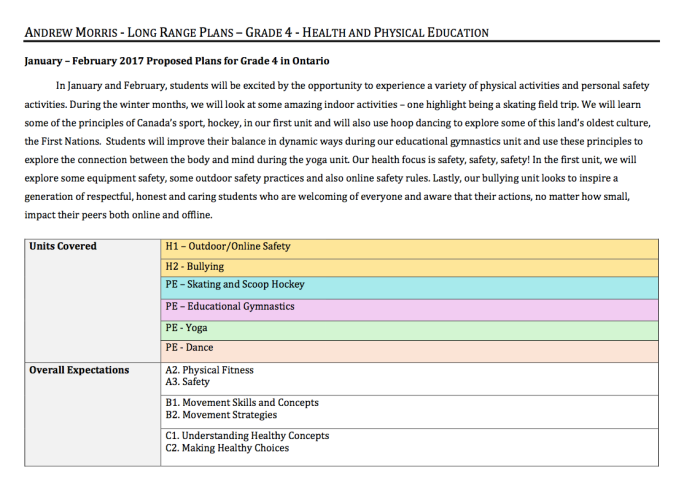 The long range plans include:
The long range plans include: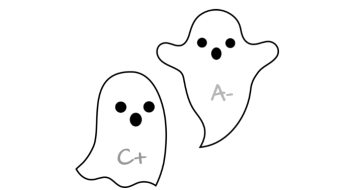
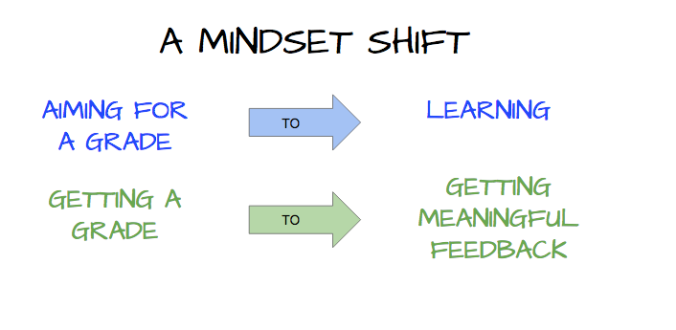 A gradeless classroom DOES NOT mean that students don’t receive grades. It does NOT mean that the teacher does nothing. It DOES NOT mean that students and parents are in the dark. What it DOES mean is: greater transparency!
A gradeless classroom DOES NOT mean that students don’t receive grades. It does NOT mean that the teacher does nothing. It DOES NOT mean that students and parents are in the dark. What it DOES mean is: greater transparency! 